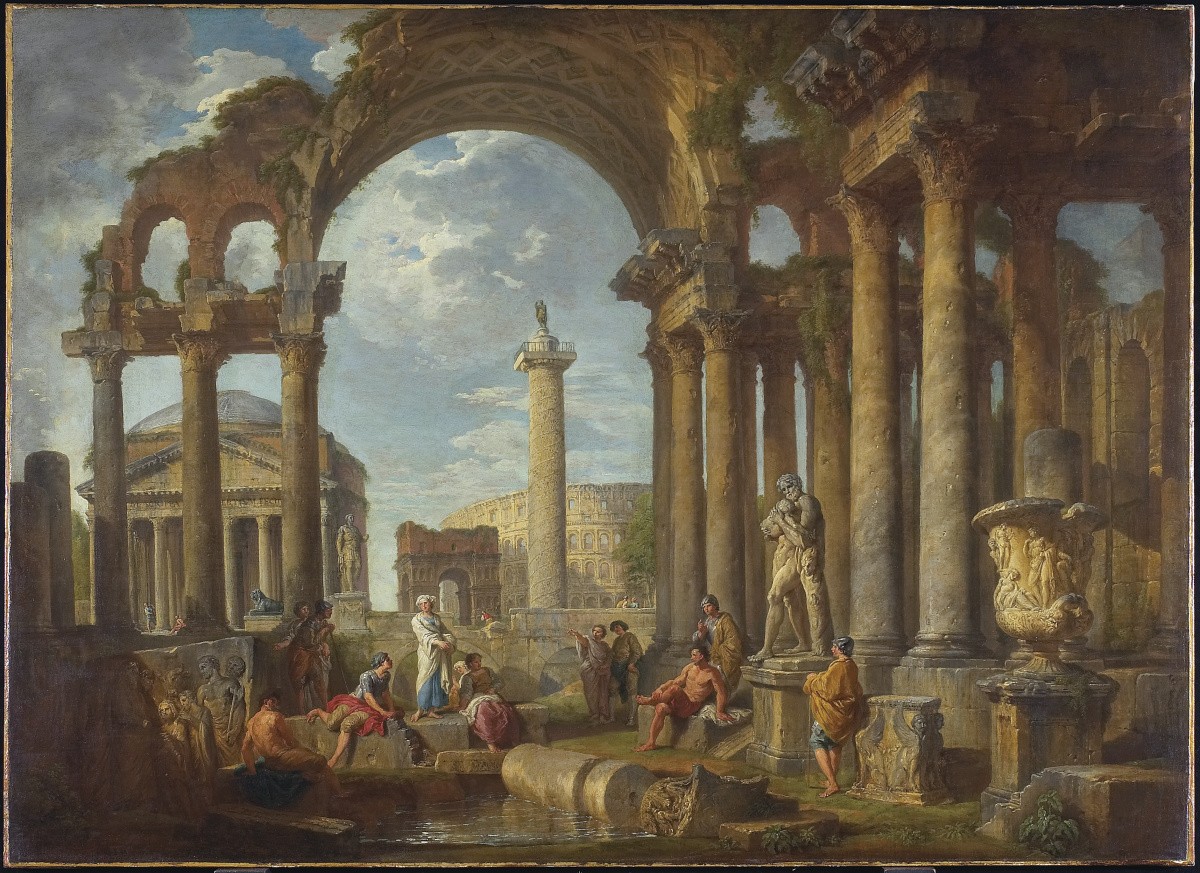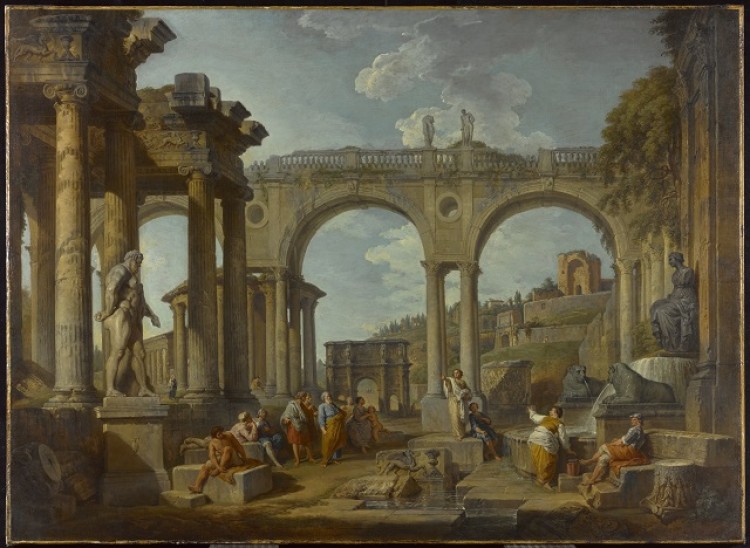Art Pick of the Week: A Capriccio of Roman Ruins with the Pantheon
Every week we’re sharing one of our favourite artworks from the AGO Collection for you to see on your next visit.

When looking at a map of Rome, you’ll have a hard time finding a vantage point that would allow you to see the Pantheon, the baths of Diocletian and Trajan’s Column all at once. But they’re all visible in the painting A Capriccio of Roman Ruins with the Pantheon by Giovanni Paolo Panini (pictured above), on view on Level 1 in the E.R. Wood Gallery (Gallery 123).
So what’s the deal? Why would one of Italy’s premier veduta painters intentionally misrepresent the architecture of his hometown? In a word, capriccio. Derived from the word capricious, capriccio painting is a style that allows artists to reimagine landscapes and recombine architectural elements to create more beautiful, whimsical and decorative scenes. For Panini and his contemporaries, capriccio paintings were about more than just added decorative appeal. They were also about making money.
During the 17th and 18th centuries, aristocratic young men from Europe would make a trip through Venice, Florence and Rome as part of their education in classical art, architecture and music. The trip was commonly known as the Grand Tour and these wealthy travellers were known to have an appetite for souvenirs of their journey. Capriccio painting allowed artists to create and sell paintings that depicted not just one, but many landmarks and monuments visited by travellers on their tour.
The whimsical combination of perspectives also opened the door for other decorative inaccuracies. You can see this in the depiction of the figures in Panini’s painting A Capriccio of Roman Ruins with the Arch of Constantine (above). Dressed in the flowing togas worn by ancient Romans, the figures sit, stand or lie at the base of a ruined aqueduct while listening to an unidentified philosopher. The keyword here is ruins. Panini painted ancient figures wearing togas surrounded by modern ruins, as they would have appeared during his time in the 18th century.
Get a closer look at both of these fantastic works, on view beside one another on Level 1 in the Frank P. Wood Gallery (Gallery 123). And for a bit more context, take a look at this Google Map to check out where various ruins and monuments are located in modern day Rome.
Admission to the AGO Collection and all special exhibitions is always free for AGO Members, AGO Annual Pass holders and visitors 25 and under. For more information, please visit the website.

